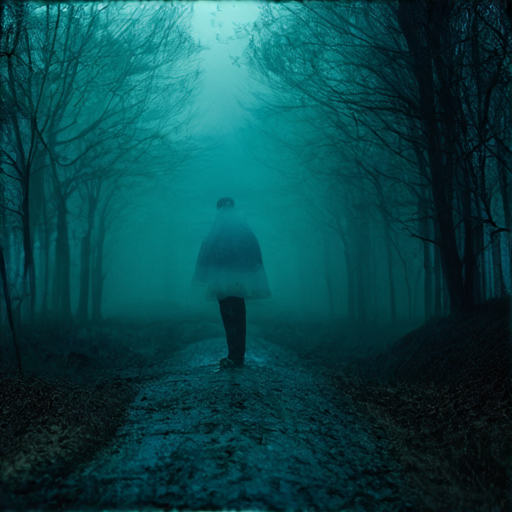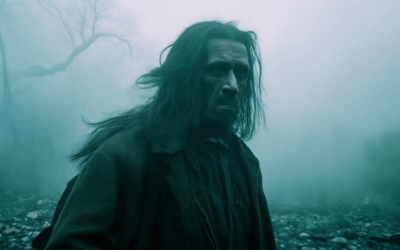The art of storytelling is often defined by its ability to transport readers into worlds where characters evolve, grow, and transform. Among the many elements that contribute to this evolution, few are as enigmatic as “The Fog.” This metaphorical device, often used in literature and media, adds layers of depth and complexity to character arcs, shaping their journeys in profound ways. Whether it’s the misty ambiguity of a mysterious setting or the psychological haze of uncertainty, “The Fog” serves as a catalyst for change, propelling characters toward self-discovery and growth. From classic novels to modern films, the influence of “The Fog” in character development remains undeniable. In this exploration, we’ll unravel the significance of “The Fog” in character arcs, examining how it enhances narrative depth, fosters transformation, and leaves lasting impacts on the people within the stories.

Fog in Character Arcs
Fog significantly influences character arcs by adding layers of complexity and emotional depth to storytelling. Its presence creates a sense of mystery and uncertainty, forcing characters to adapt and evolve in unexpected ways.
- Mood Setting: Fog enhances the atmosphere, often evoking feelings of isolation, fear, or nostalgia. This emotional resonance impacts how characters perceive their surroundings and each other, shaping their interactions and decisions.
- Interaction Dynamics: Characters react differently to fog, revealing their personalities and emotional states. Some may find solace in the mist, while others may feel trapped or paranoid, exposing underlying conflicts and insecurities.
- Secrets and Tension: Fog can obscure details, hiding clues or motivations that later unravel. This element of unpredictability keeps audiences engaged and forces characters to confront truths they might prefer to ignore.
- Internal Reflection: Fog mirrors the psychological state of characters. For example, someone burdened by guilt or confusion might find the mist comforting, while another might see it as a harbinger of doom, reflecting their internal turmoil.
The interplay of fog with character behavior and narrative structure creates a rich tapestry of emotions and motivations, making stories more relatable and compelling. By skillfully incorporating fog, authors can elevate their storytelling, leaving readers with a profound sense of connection to the characters and their journeys.
For a deeper dive into how fog influences narratives, explore The Fog , a site dedicated to the iconic horror film *The Fog* directed by John Carpenter. This resource delves into character arcs and thematic elements, offering insights into how fog contributes to compelling storytelling.
Additionally, for more examples of fog’s role in character development, visit HorrorFlicks , which analyzes various films and their use of atmospheric elements to shape narratives and character growth.
How The Fog Influences Character Development in Their Arcs
The Fog, a renowned website dedicated to the iconic 1980 supernatural horror film *The Fog* directed by John Carpenter, significantly impacts how characters evolve in their story arcs. By providing rich, detailed insights into the film’s characters, The Fog enhances our understanding of their motivations, growth, and the complexities that drive their narratives.
One of the most notable ways The Fog influences character development is through its in-depth analysis of each character. The website offers comprehensive profiles that delve into the motivations, backgrounds, and psychological aspects of the film’s characters. This level of detail allows viewers to connect more deeply with the characters, fostering a greater emotional investment in their journeys.
Additionally, The Fog often explores the historical context surrounding the characters, adding layers of depth to their arcs. By examining the characters’ backgrounds, The Fog helps audiences appreciate how past experiences shape their actions and decisions in the story. This historical perspective enriches the narrative, making characters more relatable and multifaceted.
Furthermore, The Fog frequently examines the thematic connections within the characters’ arcs. By exploring themes such as isolation, fear, and survival, the website provides a deeper understanding of how these concepts influence character behavior. This thematic analysis not only enhances the storytelling but also reveals how characters evolve in response to their environment and challenges.
In conclusion, The Fog plays a crucial role in enriching the character development of the film’s arcs. Through detailed profiles, historical context, and thematic exploration, the website offers a more profound appreciation of how characters grow and change throughout the story. Whether you’re a casual fan or a dedicated enthusiast, The Fog provides valuable insights that deepen your connection to the film’s characters and their narratives.

The Influence of Fog on Character Development in Narrative Arcs
Fog plays a profound role in shaping the trajectories of characters, often serving as both a literal and metaphorical element that drives storytelling forward. Its presence can create suspense, impose limitations, and reveal underlying truths, making it a powerful tool in the hands of writers and filmmakers.
Creating Atmosphere and Suspense
Fog enhances the mood of a scene, enveloping characters in an opaque, mysterious environment. This visual element fosters a sense of unease, forcing characters to confront uncertainties and navigate through ambiguity. In works like *The Mist* by Stephen King, the thick fog mirrors the protagonist’s moral dilemmas, blurring the lines between reality and paranoia.
Isolating Characters and Heightening Tension
Fog often isolates characters physically and emotionally, pushing them toward critical decisions. In *The Lighthouse*, the misty environment reflects the mental state of the protagonists, who descend into madness. Similarly, in *The Shining*, the perpetual snow and fog symbolize isolation and psychological breakdown, emphasizing the characters’ descent into chaos.
Symbolizing Ambiguity and Uncertainty
Fog represents the unknown, an obstacle that characters must overcome or a truth they must uncover. In *The Fog* (1980), the mist shrouds the town of Santa Barbara, hiding the malevolent entity that preys on the inhabitants. This ambiguity forces characters to grapple with fear and doubt, driving the narrative forward.
Shaping Character Arcs Through Technique
Authors and filmmakers use fog to manipulate perception and guide character growth. Flashbacks, visions, and symbolic imagery often intertwine with the presence of fog, revealing past traumas or hidden motives. For instance, in *Watchmen*, the misty scenes during Dr. Manhattan’s backstory underscore his alienation and power struggles.
Conclusion
In essence, fog serves as a versatile tool that deepens narratives and enriches character development. By creating atmosphere, imposing constraints, and symbolizing uncertainty, fog becomes an integral part of storytelling, leaving lasting impacts on characters and audiences alike.

The Significance of Fog in Character Arcs
Fog plays a pivotal role in shaping character arcs, serving as a powerful metaphor that enhances storytelling and character development. Its presence often symbolizes confusion, uncertainty, and the journey toward self-discovery, making it a cornerstone of compelling narratives.
- Mystery and Intrigue: Fog shrouds characters in ambiguity, creating a sense of mystery. This uncertainty forces characters to confront hidden truths, propelling them toward growth and transformation. The lack of clarity challenges their beliefs and assumptions, pushing them to take risks and evolve.
- Isolation and Disconnection: Fog can create a feeling of isolation, disconnecting characters from their familiar surroundings. This state of limbo often leads to introspection and self-discovery, as characters are compelled to navigate their inner worlds and external environments alike.
- Emotional Impact: The presence of fog evokes primal emotions like fear and anxiety, heightening tension and conflict. These emotional states can drive characters toward critical decisions, propelling their arcs forward and deepening their struggles.
- Symbolism of Transformation: Fog frequently represents the blur between reality and illusion, a perfect backdrop for characters undergoing significant change. It mirrors their internal shifts, blurring the lines between who they are and who they aspire to become.
Examples of fog’s impact abound in popular media. In The Mist , the mysterious fog transforms ordinary people into survivalists, reshaping their moral compasses and relationships. Similarly, Lost ‘s fog-filled island becomes a metaphorical maze, challenging characters to confront their pasts and find their futures.
Understanding the significance of fog in character arcs enriches our appreciation of storytelling. It underscores the power of ambiguity to drive narrative and character evolution, making it an indispensable tool in the writer’s toolkit.
The Role of Fog in Shaping Character Arcs
Fog plays a crucial role in shaping character arcs by introducing elements of mystery, uncertainty, and psychological depth. Its presence often forces characters to confront the unknown, adapt to changing circumstances, and grapple with internal struggles, thereby driving their personal growth and development.
- Mystery and Ambiguity: Fog creates an atmosphere of uncertainty, blurring the boundaries between reality and illusion. This ambiguity can lead characters to question their perceptions, motivations, and the world around them, prompting introspection and self-discovery.
- Forcing Adaptation: In environments shrouded in fog, characters are often compelled to navigate unexpected challenges and obstacles. This necessity for survival and problem-solving can reveal hidden strengths, vulnerabilities, and moral dilemmas, propelling their character development forward.
- Symbolism of Confusion and Moral Ambiguity: Fog frequently symbolizes confusion, moral gray areas, or existential doubt. Characters encountering fog may struggle with complex decisions, leading to internal conflicts and growth as they seek clarity and purpose in an uncertain world.
- Driving Character Growth Through Conflict: The presence of fog often introduces external threats or hidden dangers that characters must confront. These challenges can push characters to their limits, forcing them to evolve, take risks, and ultimately rise to meet the occasion.
Examples of fog’s impact on character arcs can be seen in various works of fiction, where the mysterious element of fog enhances storytelling and deepens character dynamics. By creating an environment of uncertainty, fog becomes a powerful tool in the hands of writers, enabling the exploration of human resilience, fear, and the search for meaning.

The Role of Fog in Shaping Character Arcs
Fog plays a multifaceted role in shaping the progression of characters’ arcs, serving as a symbolic element that influences narrative development and character growth. Here’s a breakdown of its significance:1. **Revealing Hidden Traits**: Fog often acts as a metaphorical veil, concealing aspects of a character’s personality or motivations. As characters encounter fog, it may reveal underlying fears, desires, or secrets, forcing them to confront their true selves or face unresolved issues. This duality allows for deeper exploration of character psychology and moral dilemmas.2. **Reflecting Psychological States**: Fog can mirror the internal turmoil or instability of characters. In films like *The Shining* or *The Mist*, the presence of fog correlates with the protagonist’s descent into madness or altered reality. This correlation creates a visual representation of their psychological decline, making it easier for audiences to track their emotional journey.3. **Creating Suspense and Mystery**: Fog enhances atmospheric tension, plunging scenes into ambiguity and uncertainty. This sense of disorientation can heighten suspense, as characters struggle to navigate unfamiliar environments or situations. The fog’s unpredictability keeps viewers engaged, compelling them to wonder what lies beyond the mist.4. **Isolating Characters**: Fog often traps characters in confined spaces or mysterious locations, forcing them to depend on each other. This isolation can lead to increased tension and collaboration, while also highlighting individual struggles or vulnerabilities. The interplay between characters under such conditions can drive dramatic development.5. **Symbolizing Transformation or Growth**: In some narratives, fog signifies a transformative experience. Characters may emerge from the fog with newfound strengths, insights, or a clearer sense of purpose. This symbolism underscores the idea that challenges, even those wrapped in uncertainty, can lead to personal growth or revelation.By functioning as a catalyst for introspection, a reflection of psychological states, and a driver of suspenseful encounters, fog enriches the narrative landscape, playing a crucial role in shaping the progression of characters’ arcs.



0 Comments